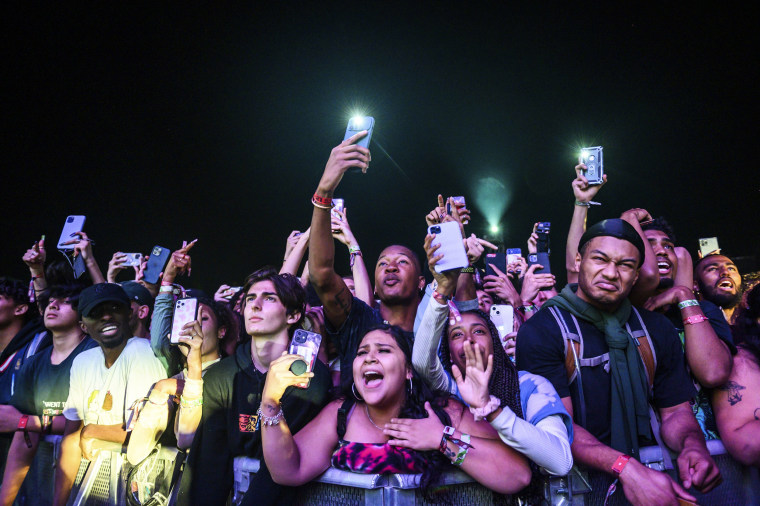Crowd surges like the one that led to eight deaths Friday at the Astroworld music festival in Houston are extremely difficult to prevent and stop, according to event management experts.
“When things start to go wrong with the crowd and panic sets in, bad things happen,” said Jim Narva, the executive director of the National Association of State Fire Marshals. “If there are thousands of bodies pushing forward, I don’t know how one person or even a few people can fight back. There’s really nothing that can stop it.”
A crowd of 50,000 “began to compress toward the front of the stage” at the Astroworld music festival, Houston Fire Chief Samuel Peña said. Police Chief Troy Finner said people started “going down” in the crowd.
“Tightly packed crowds suffer from basic physics in which the people in them tend to oscillate from side to side until someone cannot control their own body weight and falls down,” according to a post from Steve Adelman, who helped draft a set of standards for crowd management. “Then the person next to them suffers the same fate, until there is a pile of people who are nearly invisible in the dark, pressing the air out of each other.”
It’s unclear what caused the incident; Houston police are investigating. More than a dozen lawsuits have been filed against Travis Scott, the rapper who launched the annual festival in his hometown, and Live Nation Entertainment, the concert promoter that organized the event.
The police department declined to comment further on the status of its inquiry. Finner said in a statement on Twitter that he had been concerned about public safety before the event. He said he met with Scott and his head of security beforehand.
“I expressed my concerns regarding public safety and that in my 31 years of law enforcement experience I have never seen a time with more challenges facing citizens of all ages, to include a global pandemic and social tension throughout the nation,” Finner tweeted. “I asked Travis Scott and his team to work with HPD for all events over the weekend and to be mindful of his team’s social media messaging on any unscheduled events. The meeting was brief and respectful, and a chance for me to share my public safety concerns as Chief of Police.”
Experts are certain about one thing: Once a surge starts, it can be difficult to prevent harm. That’s in part because surges are often undetectable until it’s too late and things are completely out of control.
“Even a reasonably attentive observer who can see a tightly packed crowd will probably perceive no imminent danger until people start falling down,” wrote Adelman, vice president of the Event Safety Alliance, a nonprofit industry group dedicated to promoting safety at events.
The Life Safety Code states that in crowds of more than 250 people, there should be a ratio of 1 crowd manager for every 250 occupants.
The danger can be aggravated at night, when crowd density is more difficult to see or when the cause of a crowd surge isn’t immediately apparent as it might be in the case of a large, visible fire or an active shooter situation.
“People may not be aware of what’s going on,” Narva said. “I think it gets very dangerous before people even realize it’s dangerous. They’re caught up in the moment, dancing, listening to music. If there’s an emergency situation where there’s an active shooter, you know it’s a dangerous situation right away.”
Narva said that it’s important to try to stay calm and rational but that it’s often difficult in such situations. He said people tend to get caught up in the frenzy of the moment.
“Time and again, we see when there’s an emergency situation, people will try to exit out of the same entrance they came in,” Narva said. “If that entryway is blocked, panic sets in and they’re unable to figure out what to do.”
That’s why it’s important to have crowd managers on hand who are trained to help manage the chaos and get people to safety.
The Life Safety Code, or NFPA 101, which is put out by the National Fire Protection Association, provides guidance for crowd management that is used by many states, including Texas. It says that in situations with crowds of more than 250 people, there should be a ratio of 1 crowd manager for every 250 occupants.
However, it’s about more than just the ratio.
Crowd managers should be trained to “understand safety and security hazards that can endanger public assembly,” understand techniques for managing crowds and know the different “methods of evacuation and movement.”
"[W]hat's causally relevant to this incident is, What did the people closest to the incident understand about crowd dynamics, and what were they prepared to do to keep guests safe," Adelman wrote.
